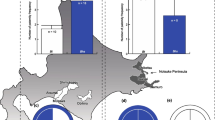Abstract
Continuing to explore the intriguing world of the Indian paper wasp Ropalidia marginata for one last time, here we will focus on the function of fighting behaviour in two additional contexts (i) the hyper-aggression of the potential queen during queen succession and (ii) during encounters with non-nestmate wasps. We will see again that the function of fighting is different in different contexts. We have already seen two different functions of fighting in two different contexts—to decide who will be the queen and who will be the worker in the context of founding new nests, and to regulate foraging in mature colonies by conveying colony hunger levels to foragers. Here we will see that the function of the potential queen’s hyper-aggression is to boost her own ovarian development and the function of aggression towards non-nestmates is to keep them away, and if necessary, to kill! As before, our primary focus will be on how to design simple experiments that will help answer a direct question, while minimising the need for expensive equipment or other facilities.
Similar content being viewed by others
Suggested Reading
R Gadagkar, How to design experiments in animal behaviour: 6. Why are male wasps lazy?, Resonance-journal of science education, Vol.24, No.9, pp.995–1014, 2019.
R Gadagkar, How to design experiments in animal behaviour: 7. How do wasps decide who would be the queen? Part 1., Resonance-journal of science education, Vol.24, No.10, pp.1087–1107, 2019.
R Gadagkar, How to design experiments in animal behaviour: 8. How do wasps decide who would be the queen? Part 2., Resonance—journal of science education, Vol.24, No.11, pp.1287–1310, 2019.
R Gadagkar, How to design experiments in animal behaviour: 9. Why Do Wasps Fight? Part 1, Resonance—journal of science education, Vol.24, No.12, pp.1413–1426, 2019.
R Gadagkar, The Social Biology of Ropalidia marginata: Toward Understanding the Evolution of Eusociality, Harvard University Press, Cambridge, Massachusetts, USA, 2001.
A Mitra and R Gadagkar, Road to royalty: Transition of potential queen to queen in the primitively eusocial wasp Ropalidia marginata, Ethology, 118, pp.694–702, 2012, doi: 10.1111/j.1439-0310.2012.02059.x
S Lamba, Y C Kazi, S Deshpande, M Natesh, A Bhadra and R Gadagkar, A possible novel function of dominance behaviour in queen-less colonies of the primitively eusocial wasp Ropalidia marginata, Behavioural Processes, 74, pp.351–356, 2007.
R Gadagkar, Choosing a new queen: Consensus without conflict in a social wasp colony in Landscapes of Collectivity in the Life Sciences, edited by Snait B. Gissis, Ehud Lamm, and Ayelet Shavit, The MIT Press, Cambridge, Massachusetts, London, England, pp.67–75, 2017.
H S Arathi, M Shakarad and R Gadagkar, Social organization in experimentally assembled colonies of Ropalidia marginata: Comparison of introduced and natal wasps, Insectes Soc, 44, pp.139–146,1997.
A B Venkataraman and R Gadagkar, Differential aggression towards alien con-specifics in a primitively eusocial wasp, Current Science, 64, pp.601–603, 1993.
R Gadagkar, Interrogating an insect society, Proc. Natl. Acad. Sci. USA., 106, pp.10407–10414, 2009.
Acknowledgements
I am grateful to Sujata Deshpande and Anindita Bhadra for helpful comments on this article.
Author information
Authors and Affiliations
Corresponding author
Additional information
Raghavendra Gadagkar is DST Year of Science Chair Professor at the Centre for Ecological Sciences, Indian Institute of Science, Bangalore, Honorary Professor at JNCASR, and Non-Resident Permanent Fellow of the Wissenschaftskolleg (Institute for Advanced Study), Berlin. During the past 40 years he has established an active school of research in the area of animal behaviour, ecology and evolution. The origin and evolution of cooperation in animals, especially in social insects, such as ants, bees and wasps, is a major goal of his research. http://ces.iiscac.in/hpg/ragh. https://www.researchgate.net/profile/RaghavendraGadagkar
Rights and permissions
About this article
Cite this article
Gadagkar, R. How to Design Experiments in Animal Behaviour. Reson 25, 111–131 (2020). https://doi.org/10.1007/s12045-019-0925-y
Published:
Issue Date:
DOI: https://doi.org/10.1007/s12045-019-0925-y




